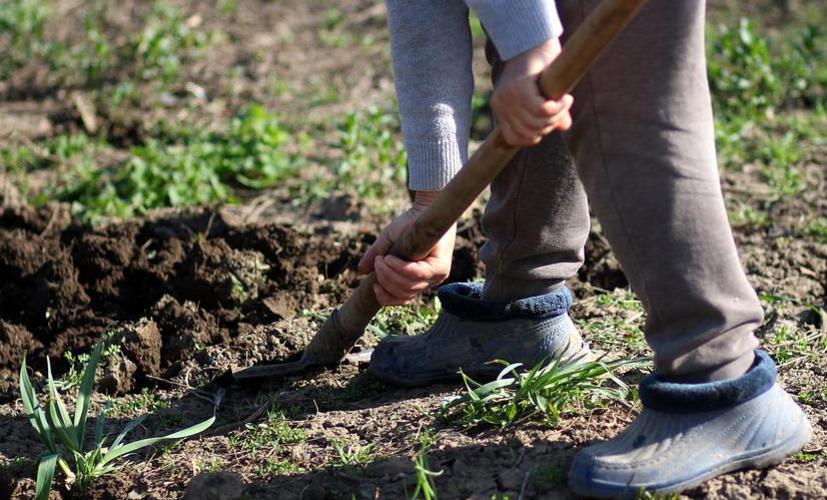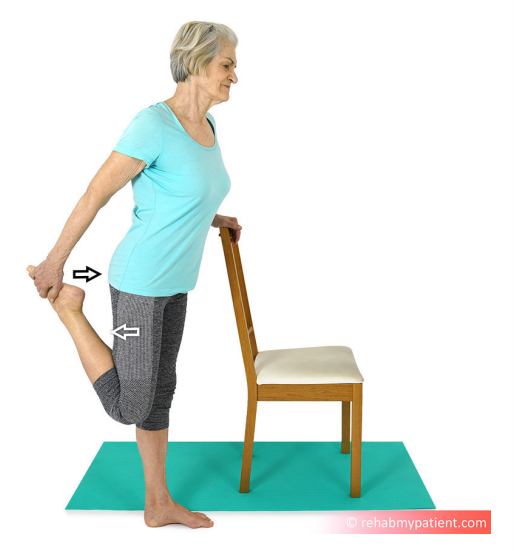Top tips to help ease knee pain when gardening
Posted on 29th April 2022 at 13:52
It is that time of year again to be getting out into the garden and this is an extremely popular pastime with many of our patients. It is also that time of year when we see more knee pain in the clinic. People will often ask us how can I protect my knees whilst gardening, and is gardening with bad knees going to be a problem. We can help and show people how can they make it better so that they can continue with their love of gardening?
The knee is the largest joint in the human body, it is a hinge joint that is built to endure the strains and stresses from everyday activities, and the joint most commonly affected by arthritis.. The knee is susceptible to a variety of conditions and injuries such as ‘gardener’s’ knee, anterior knee pain, cartilage and ligament injuries and arthritis.
The knee is a hinge joint, meaning it allows the leg to bend back and forth with minimal side-to-side motion. It is comprised of bones, cartilage, ligaments, tendons, and other tissues. Three bones meet and move against each other at the knee joint. The bottom of the femur (thigh bone) meets with top of the tibia (shin bone) and the patella (kneecap) glides along a groove located at the bottom and front of the femur.

Like other overuse knee injuries or joint ‘wear and tear,’ the repetitive movements like kneeling to standing up can present problems for gardeners. These overuse knee injuries typically have no signs or symptoms at the start, but the symptoms tend to present over time. By the time many people come to us with aches and pains they have often ignored it for a while, hoping that it will go away. It is important to get things looked at early and a proper diagnosis made of the issue, this can help prevent more severe, and sometimes irreversible, damage occurring. So, to recap, you should get checked out earlier rather than later to stop some conditions getting worse.

Gardening can provide health benefits and reduce the risk of getting diseases such as stoke and to help increase your joint and muscle strength and flexibility. However, it is worth while looking at ways to minimise any joint or muscle injuries so that you can keep yourself both fit and healthy and continue doing the activity you enjoy.
Gardening is a gentle impact exercise you should approach it as if you were doing any other form of exercise, warm up, know your limits, pace yourself and work within your physical limits.
Gardener’s knee is a condition where you have inflammation and swelling of the bursa in front of the knee cap. A bursa is a sac of fluid that provides a cushion and reduces friction between the surfaces of a bone and soft tissues. Prolonged or repetitive kneeling can cause friction and put pressure on the bursa and kneecap. The bursa gradually gets inflamed and swells, causing pain on the front of the knee. Knee bursitis commonly occurs with gardening activities that involve a lot of kneeling and squatting. You may feel some warmth in the knee and have a tender and swollen feeling from the front of the knee, over the patella, or knee cap. You may get knee pain when you apply pressure to the front of the knee, are moving, or even at rest.

Patellofemoral pain is a condition that can cause sharp pain in the front of the knee when gardeners are squatting, kneeling, or bending especially during gardening tasks such as weeding and hoeing. The early symptoms of patellofemoral pain syndrome can include a dull, aching, or sharp pain in the front of the knee.
This is a condition that we treat a lot and very successfully with exercises.
Tips to help prevent injuries
Protect your knees by using knee pads or a gardening kneeler, these make gardening more comfortable and safer for your knees. Many garden kneelers are collapsible and can be turned and used as a seat and you can use the handles on the kneeler to push yourself up without stressing your knees
Wear comfortable, supportive shoes
Change your positions frequently – if you are kneeling most of the time to do gardening tasks, change position frequently, this will help relieve stress on your knees. Changing from one knee to the other can help to relieve the stress regularly and gives each knee a break. Take frequent breaks to pace yourself and change the tasks that you are doing so that you are constantly working different parts of the body.
Do some little warm up stretches prior to going out into the garden, this could include some mini squats and stretches for the muscles on the front and back of your thighs. Keep yourself warm with appropriate clothing, especially in cooler weather.
Use gardening tools with long handles and buy garden supplies in smaller, lighter quantities.
Consider a raised garden bed
Better gardening positions would be having one knee on the ground (alternating knees), working on your hands and knees using a knee/kneeling pad, or sitting on a stool
Be careful about the risk of falls with loose gravel or wet grass
Carry out strengthening exercises for the knees
Exercises for strengthening your knees
The muscles that protect your knees are the quadriceps muscles on the front of the thigh and the hamstrings on the back. Start including these exercises into your daily routine or do them a few times a week. You will slowly become stronger and hopefully your gardening activities will become easier and more enjoyable. And do not forget to stretch prior to gardening too.
Squats – These are really good for strengthening your quads (thigh muscles), buttocks and deep tummy muscles. This will help you to lift heavy items, like bags of compost and planters, with your legs and also condition you for squatting to weed. Beginners should start with chair squats and then work your way up to a more advanced version with or without weights.

Stand up, and position yourself in front of a chair or stool. Bend your knees to go into a squat position, and touch your bottom on the chair. Then, push up and go into the standing position. Throughout the exercise, keep your knee in-line with your foot, do not let your knee drift outwards or inwards. Also keep your hips and pelvis level as you squat, so you go down in a straight line. Be careful not to slump forwards as you squat, maintain good posture.
Repeat 5-10 times, daily or 3 times a week
Lunges will help with strengthening your knees using the quadriceps muscles on the front of your thighs. They are also incredibly good for adding strength and flexibility to your hips.
You can start off with stationary lunges and progress to walking ones.

Take a step forwards, and bend the front knee past the vertical. The back knee drops towards the floor. Always keep good alignment: your knee should stay over the 2nd toe of your foot, and never let your knee drop inwards. Only go as far as feels comfortable. Hold on to a table or chair for support.
Repeat 5-10 times, daily or 3 times a week
Deadlifts are a good exercise to strengthen your lower back and glutes (buttock muscles). This will also help with lifting and weeding

Use a bar or a broom handle, and place them on some blocks/chairs.
Bend your knees and squat down. Lift the bar by moving it up along the lines of your shins and thighs, and straighten up.
Repeat 10 times, daily or 3 times a week
Other exercises that are worthwhile doing are walking up and down stairs, using an exercise bike and practice getting in and out of a chair without using your arms, if safe to do so
Stretches for your knees
As gardening is a form of exercise it is worthwhile doing a few stretches before you start, especially if you know that it is going to be a long session!
Hip Flexor and Quads Stretch
Stand up and bend your knee so your foot goes towards your bottom. Extend your hip behind you, to create a stretch to the front and top of your thigh. You may need to hold on to something for support. This exercise will help to stretch your hip flexor, and quadricep muscle groups.
Hold this stretch, and relax. Repeat on both sides
Hold for 1 minute, prior to gardening

Hamstring Stretch
Standing up, place your foot on a chair. Keep your leg straight. You
should feel a stretch behind your knee and into the back of your thigh.
Lean forwards to make the stretch in your hamstring stronger.
Hold this stretch, and relax. Repeat on both sides
Hold for 1 minute, prior to gardening

Arthritis is fairly common in the knee joint and strengthening exercises for the quadriceps and hamstring muscles will help. Try not to ignore any pain from your knees and seek help sooner rather than later. We treat a lot of knee issues and can really help with your symptoms. With any arthritic or wear and tear issues sooner rather than later is best. Let us try and help you in the early stages with strengthening the knees to help stop it progressing and becoming much worse.
Everyone wants to be able to continue doing the activities they love.
Do Not Suffer In Silence, come and see us NOW!
Share this post:




